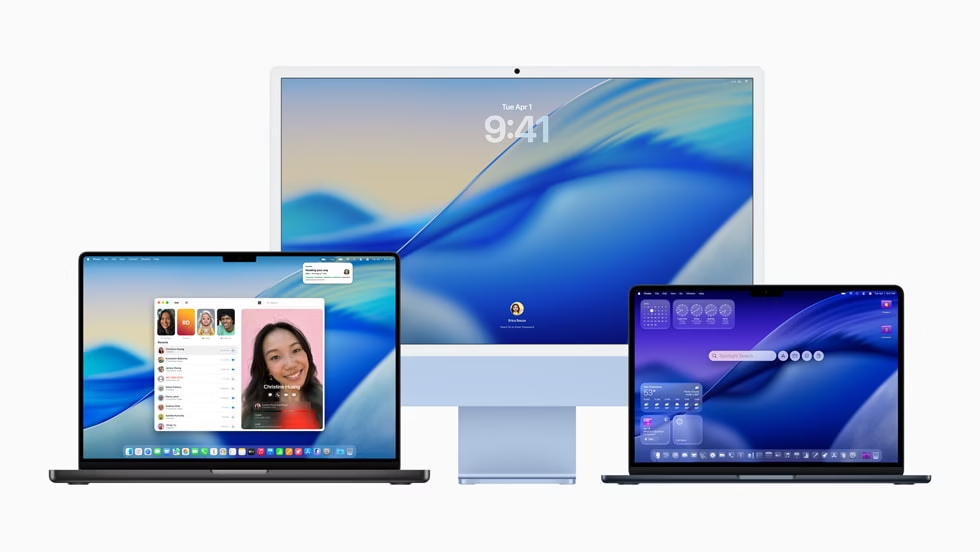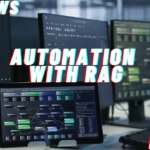The news from Apple’s WWDC 2025 keynote has finally landed, and for the Hackintosh community, it’s a bombshell that will echo for years to come. Apple has confirmed it: macOS Tahoe, the newly unveiled version 26, will be the final version of macOS to ever support Intel processors.
This isn’t just another challenging update. This is the official beginning of the end for the traditional Hackintosh as we’ve known and loved it for nearly two decades.
While Apple showcased a beautiful new “Liquid Glass” design and a suite of impressive features, a somber reality underlies every announcement. We are looking at the last set of new tricks our custom-built machines will ever officially learn from Cupertino.
This article isn’t just a first look at a new OS; it’s an analysis of the final chapter and a guide on what comes next for a community built on defying limits.
A Bittersweet Final Update: The Last New Features for Intel
Let’s start with what macOS Tahoe brings to the table, as these features will define the pinnacle of the Intel Hackintosh experience.
- “Liquid Glass” Design: A beautiful, translucent new UI that offers a final coat of modern paint.
- Dedicated Phone App & Live Activities: The last major step in integrating the iPhone with our Intel-based desktops.
- Upgraded Spotlight & Customization: A more powerful search and more user control over the look and feel of the OS.
- Apple Intelligence & Gaming: The last wave of Apple’s AI features and the new unified Games app that our systems will get.
These are excellent features, but they must be viewed through a new lens: they are the features that will solidify macOS Tahoe as the long-term, feature-complete OS for the community.

The End of Intel Support: Why This Is The Final Chapter
For years, the community has overcome every obstacle. So why is this different?
The end of Intel support means that the version after macOS Tahoe (coming in 2026) will be exclusively for Apple’s ARM-based silicon. It will be compiled for a completely different CPU architecture.
Unlike the transition from PowerPC to Intel, emulating the modern Apple Silicon ARM instruction set on our x86 (Intel/AMD) hardware with any usable performance is a monumental, if not impossible, task for a full desktop OS. There will be no simple patches or kernel tricks. The fundamental building blocks of the operating system will no longer be compatible with the hardware we use.
This means macOS Tahoe is not a hurdle; it’s the finish line.
The “Sunset” Period: Making the Most of Our Final Version
So, is building a Hackintosh in 2025 pointless? Absolutely not. In fact, it now has a new purpose.
macOS Tahoe will become the community’s “Long-Term Support” (LTS) release. It will be the most refined, stable, and feature-rich version of macOS we can run, and it will likely receive security updates from Apple for another two to three years.
The goal now shifts from “how do we get the next OS running?” to “how do we perfect the macOS Tahoe Hackintosh?”
- Build with Confidence: You can now build a PC with parts that are perfectly compatible with Tahoe, knowing this is the final target. Our Hackintosh Compatibility Guide is more relevant than ever for building that perfect final machine.
- Create a Stable Setup: This is the time to create a rock-solid, reliable system. Consider a dual-boot setup using our Hackintosh Dual Boot Guide to keep a stable macOS Tahoe installation alongside Windows or Linux for years to come.
What is the Future? Life After Hackintosh
This news forces us to look ahead. If you’re a tinkerer at heart, your journey doesn’t end here; it just changes direction.
- The Rise of Linux: For many, Linux is the natural successor. You retain full control over your hardware, enjoy endless customization, and can even use tools to make your desktop environment look and feel remarkably like macOS.
- Windows as the Default: For gaming and mainstream applications, Windows remains the standard for PC hardware, and its feature set continues to improve.
- Finally Buying a Mac: For some, the end of this journey may signal that it’s finally time to buy an Apple Silicon Mac. The performance is undeniable, and it’s a hassle-free way to stay in the Apple ecosystem.
- A New Frontier? (ARM PCs): Could macOS be made to run on non-Apple ARM hardware, like PCs with Snapdragon chips? This is highly speculative and would be a completely new, incredibly difficult challenge, distinct from the x86 Hackintoshing we know.
Key Questions for a Community in Transition
- Is Hackintosh officially dead?
- The tradition of installing new versions of macOS on PC hardware will end after macOS Tahoe. So, yes, in that sense, it is the end of the road. The existing versions and a perfected Tahoe build will live on for years, however.
- What is the last version of macOS for Intel?
- macOS Tahoe (version 26) is the final version confirmed to support Intel processors.
- Should I still build a Hackintosh in 2025?
- Yes, if your goal is to create the ultimate, final version of an Intel-based macOS machine that will serve you for the next few years. If your goal is to always have the latest OS, then no.
Conclusion: An End of an Era, and a Thank You
For nearly 20 years, the Hackintosh community has been one of the most vibrant, intelligent, and resilient groups in the tech world. It was a testament to the desire for choice and a passion for pushing boundaries.
macOS Tahoe isn’t a funeral; it’s a final, triumphant roar. It’s the last great project. Let’s work together to make it the most stable, most documented, and best version the community has ever seen.
Thank you to every developer, forum moderator, and user who contributed to this incredible journey. The story is ending, but what a story it has been.
Share your memories and your plans for the future in the comments below. Let’s celebrate this final chapter together.














